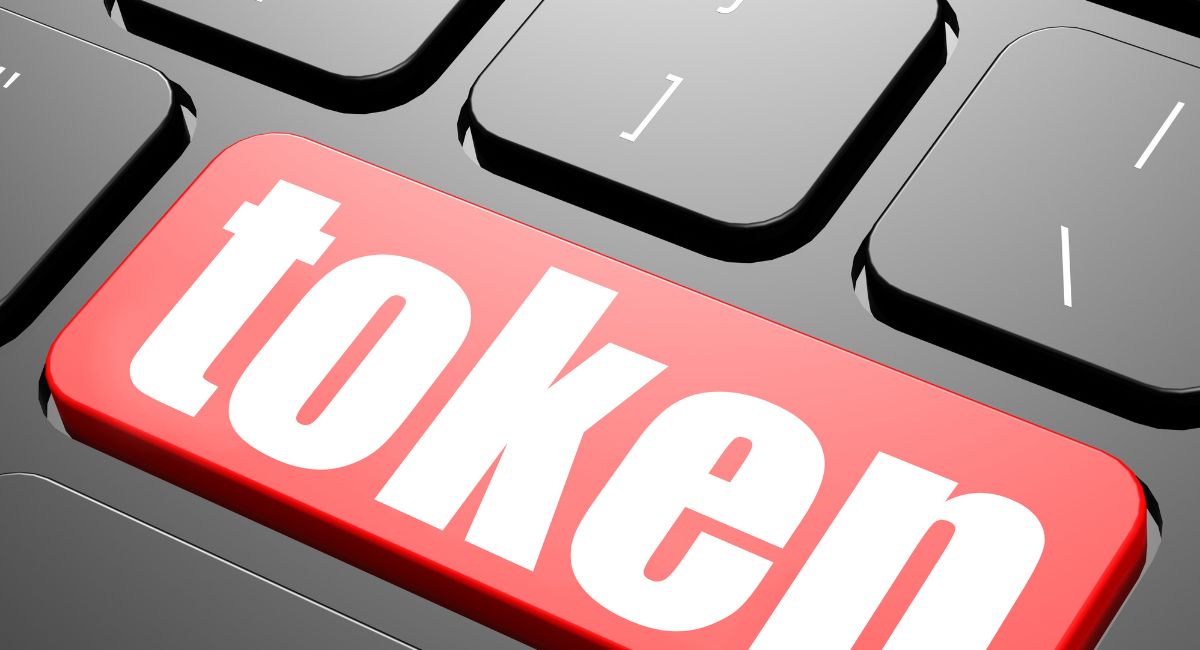Top 7 Use Cases Of ‘Semi-Fungible’ Crypto Tokens That Make Sense
In the ever-evolving landscape of cryptocurrencies, novel terms and concepts continue to emerge, expanding the realm of possibilities for blockchain technology. One such term that has recently gained traction is ‘Semi-Fungible‘ crypto tokens. In this comprehensive article, we delve into the intricacies of what exactly constitutes a ‘Semi-Fungible’ token and how it differs from its more conventional counterparts.
Understanding Fungibility:
To comprehend Semi-Fungible crypto tokens, it’s essential to first grasp the concept of fungibility. In the crypto space, fungibility refers to the interchangeable nature of tokens or coins. Traditional cryptocurrencies like Bitcoin and Ethereum are considered fully fungible, meaning each unit is indistinguishable and can be exchanged on a one-to-one basis.
Breaking Down ‘Semi-Fungible’:
The term ‘Semi-Fungible’ introduces a nuanced layer to this fungibility concept. Unlike fully fungible tokens, semi-fungible tokens possess unique characteristics that set them apart. These tokens share some fungible attributes while also incorporating elements of non-fungibility.
Key Features of Semi-Fungible Tokens:

Semi-fungible tokens represent a unique and nuanced category within the broader spectrum of digital assets. These tokens incorporate both fungible and non-fungible elements, offering a blend of interchangeability and individuality. To understand the key features of semi-fungible tokens, let’s delve into the intricacies that distinguish them from fully fungible and non-fungible counterparts:
- Partial Interchangeability: One of the defining features of semi-fungible tokens is their partial interchangeability. Unlike fully fungible tokens where each unit is entirely interchangeable with another on a one-to-one basis, semi-fungible tokens exhibit variability in certain attributes while maintaining a level of interchangeability. This means that some aspects of the tokens can be exchanged on a like-for-like basis, while others remain distinct.
- Customizable Attributes: Semi-fungible tokens often allow for the customization of specific attributes, introducing a layer of uniqueness to each token. These customizable elements could include visual features, metadata, or other characteristics that differentiate one token from another. This feature is particularly advantageous in applications such as digital art, collectibles, and gaming, where users seek both uniqueness and the ability to trade assets.
- Smart Contract Functionality: The underlying technology that facilitates the semi-fungible nature of these tokens is often smart contracts. Smart contracts are self-executing contracts with the terms of the agreement directly written into code. In the context of semi-fungible tokens, smart contracts enable the creation and management of unique attributes within each token. This programmability allows for the implementation of complex rules and functionalities, contributing to the versatility of semi-fungible tokens.
- Indivisibility and Divisibility: Semi-fungible tokens can be designed to be either indivisible or divisible. Indivisible tokens function like traditional non-fungible tokens, where each unit is a distinct whole. Divisible tokens, on the other hand, can be broken down into smaller fractions, allowing for more granular ownership and transfer. This flexibility in divisibility adds to the adaptability of semi-fungible tokens in various use cases.
- Enhanced Liquidity: The partial interchangeability of semi-fungible tokens contributes to enhanced liquidity compared to fully non-fungible tokens. While maintaining certain unique properties, these tokens can still be traded more fluidly in the market, fostering a balance between individuality and liquidity. This feature is particularly advantageous in markets where the ease of buying and selling assets is a crucial factor.
- Use Cases Across Industries: Semi-fungible tokens find applications across a diverse range of industries. In the gaming sector, for instance, in-game assets can be represented as semi-fungible tokens, providing players with tradable items that also possess unique characteristics. In the realm of digital art and collectibles, artists can tokenize their creations as semi-fungible assets, offering a combination of artistic uniqueness and market liquidity.
- Blockchain Interoperability: The design of tokens often leverages interoperability features, allowing them to exist on multiple blockchain platforms. This interoperability enhances the accessibility and usability of these tokens, enabling them to interact with a broader ecosystem of decentralized applications and platforms.
Understanding these key features provides a comprehensive insight into the dynamic nature of tokens. As blockchain technology continues to evolve, the versatility and innovation introduced by semi-fungible tokens contribute significantly to the ongoing diversification of the digital asset landscape.
Use Cases and Applications of Semi-fungible tokens

Semi-fungible tokens (SFTs) represent a novel category of digital assets that combine elements of both fungibility and non-fungibility, opening up diverse possibilities across various industries. Their unique characteristics make them suitable for a range of applications, offering a blend of interchangeability and individuality. Let’s explore in detail some notable use cases and applications of semi-fungible tokens:
- Gaming Industry:
- In-Game Assets: Semi-fungible tokens find extensive use in the gaming industry for representing in-game assets. Players can own and trade unique items, characters, or accessories as semi-fungible tokens. These tokens bring a new dimension to virtual economies within games, allowing for ownership and transfer of digital assets with varying degrees of uniqueness.
- Cross-Game Interoperability: SFTs can facilitate cross-game interoperability, enabling players to carry assets or characters from one game to another. This enhances the gaming experience by creating a seamless virtual asset ecosystem and fostering user engagement across multiple gaming platforms.
- Digital Art and Collectibles:
- Tokenized Artwork: Artists can tokenize their digital artwork as semi-fungible tokens, providing collectors with a unique blend of individuality and tradeability. Each tokenized art piece can have distinct attributes, such as the artist’s signature, creation date, or other metadata, making it a valuable and tradable digital collectible.
- Limited Edition Collectibles: SFTs allow for the creation of limited edition digital collectibles. Artists can issue a specific number of semi-fungible tokens, each representing a unique and limited edition of their work. Collectors can then trade these limited edition tokens, adding scarcity and value to the digital collectibles market.
- Real Estate:
- Tokenized Property Ownership: The tokens can be utilized to represent ownership of real estate properties. Each token may represent a share or portion of a property, allowing for fractional ownership and efficient transfer of real estate assets on blockchain networks. This can democratize access to real estate investments and streamline property transactions.
- Customizable Property Attributes: Property details such as location, size, and features can be embedded as customizable attributes within semi-fungible tokens. This allows for the representation of diverse real estate assets on a blockchain, providing a transparent and efficient way to manage and trade real estate tokens.
- Supply Chain and Logistics:
- Product Authenticity and Traceability: SFTs can be employed to ensure the authenticity and traceability of products within the supply chain. Each product can be represented by a semi-fungible token, recording essential information such as origin, manufacturing date, and logistics history. This enhances transparency and reduces the risk of counterfeit goods.
- Conditional Ownership: Semi-fungible tokens can introduce conditional ownership in supply chain applications. For instance, a token representing a shipped product may change ownership conditionally upon reaching its destination or meeting certain quality standards, streamlining complex supply chain processes.
- Finance and DeFi:
- Fractional Ownership of Financial Instruments: In the financial sector, tokens can represent fractional ownership of various financial instruments such as stocks, bonds, or investment funds. This allows for the creation of more accessible and divisible financial products, opening up investment opportunities to a broader audience.
- Dynamic Loan Collateralization: SFTs can be used as collateral in decentralized finance (DeFi) platforms. The dynamic nature of semi-fungible tokens allows for customizable collateral attributes, providing flexibility in loan agreements and enhancing the efficiency of decentralized lending protocols.
- Entertainment and Media:
- Event Tickets: tokens can revolutionize the ticketing industry by representing event tickets as blockchain-based assets. Each ticket can have unique attributes, such as VIP access or special privileges, creating a more engaging and secure ticketing experience for event-goers.
- Digital Streaming Rights: In the media and entertainment sector, SFTs can represent digital streaming rights for content creators. Each token may grant specific access or usage rights, allowing for more flexible and transparent content distribution models.
- Identity and Credentials:
- Digital Identity Tokens: SFTs can play a role in the management of digital identities. Each token may represent a unique digital identity, with customizable attributes such as age, nationality, or certifications. This can enhance the security and privacy of digital identity systems.
- Educational Credentials: SFTs can be used to tokenize educational credentials, making academic achievements and certifications verifiable on a blockchain. This can streamline the credential verification process for employers and educational institutions.
These diverse use cases highlight the adaptability and versatility of tokens across industries. As blockchain technology continues to evolve, SFTs are likely to find even more applications, contributing to the ongoing innovation and transformation of various sectors.
Discover the World of Semi-Fungible Tokens (SFTs): A unique blend of fungible and non-fungible token traits that’s reshaping the digital asset landscape.https://t.co/iD9RKwxmuT
— DroomDroom (@DroomDroom) January 4, 2024
Challenges and Future Outlook:
- Standardization:
- Challenge: The lack of standardized protocols for semi-fungible tokens poses a challenge for interoperability and widespread adoption. Different blockchain platforms may implement varying standards, leading to fragmentation and potential compatibility issues.
- Future Outlook: Industry-wide collaboration and the development of common standards for semi-fungible tokens can mitigate interoperability challenges. Standardization efforts, such as the establishment of token standards by industry consortia, can pave the way for a more cohesive ecosystem.
- Regulatory Considerations:
- Challenge: Regulatory frameworks for semi-fungible tokens are still evolving, and the unique characteristics of these tokens may pose challenges in compliance. Legal clarity and regulatory guidelines are essential for the broader acceptance of SFTs in traditional financial systems.
- Future Outlook: Continued engagement with regulators, proactive compliance initiatives, and the development of regulatory frameworks specific to semi-fungible tokens can foster a more secure and compliant environment. Collaboration between industry stakeholders and regulatory bodies is crucial for achieving this.
- Scalability:
- Challenge: As blockchain networks continue to grow, scalability remains a challenge for semi-fungible tokens. The execution of complex smart contracts and the management of a large number of unique tokens can strain the scalability of some blockchain platforms.
- Future Outlook: Ongoing advancements in blockchain scalability solutions, such as layer 2 solutions and sharding, aim to address scalability challenges. As these technologies mature, they can enhance the performance and efficiency of blockchain networks supporting semi-fungible tokens.
- User Education and Awareness:
- Challenge: Understanding the unique features of semi-fungible tokens may require a learning curve for both developers and end-users. Lack of awareness and education can hinder the broader adoption of these tokens.
- Future Outlook: Community-driven educational initiatives, documentation, and user-friendly interfaces can bridge the knowledge gap. Increased awareness about the benefits and use cases of semi-fungible tokens is crucial for their widespread acceptance.
- Privacy Concerns:
- Challenge: The transparency of blockchain networks, while a fundamental feature, may raise privacy concerns in certain use cases. Ensuring the confidentiality of sensitive information while maintaining the benefits of blockchain transparency is a delicate balance.
- Future Outlook: Privacy-focused advancements, such as zero-knowledge proofs and privacy-centric blockchain networks, can address these concerns. Striking a balance between transparency and privacy will be essential for the continued growth of semi-fungible tokens in privacy-sensitive applications.
- Market Adoption and Integration:
- Challenge: Achieving widespread market adoption and seamless integration of tokens across various industries requires overcoming traditional resistance to change and legacy systems.
- Future Outlook: Strategic partnerships, pilot programs, and successful case studies demonstrating the benefits of semi-fungible tokens can drive market adoption. Integration with existing infrastructure and legacy systems will be crucial for their seamless incorporation into mainstream business processes.
The emergence of crypto tokens represents a dynamic intersection of fungibility and uniqueness within the blockchain space. While facing challenges like standardization, regulatory considerations, and scalability, the future outlook for these tokens remains promising. Ongoing advancements in blockchain technology, coupled with collaborative efforts to address challenges, are expected to propel the adoption of tokens across diverse industries. As industries continue to explore and implement these tokens, the crypto landscape is poised for further diversification and innovation. Keep a watchful eye on this space as semi-fungible tokens continue to shape the future of digital assets.
Also, read- Top 10 Countries Leading Blockchain Technology In 2023
Conclusion:
In conclusion, the emergence of ‘Semi-Fungible’ crypto tokens represents a fascinating intersection of fungibility and uniqueness within the blockchain space. As industries explore the potential applications of these tokens, the crypto landscape stands poised for further diversification and innovation. Keep an eye on this space as semi-fungible tokens continue to shape the future of digital assets.
Stay informed with daily updates from Blockchain Magazine on Google News. Click here to follow us and mark as favorite: [Blockchain Magazine on Google News].
Get Blockchain Insights In Inbox
Stay ahead of the curve with expert analysis and market updates.
latest from tech
Disclaimer: Any post shared by a third-party agency are sponsored and Blockchain Magazine has no views on any such posts. The views and opinions expressed in this post are those of the clients and do not necessarily reflect the official policy or position of Blockchain Magazine. The information provided in this post is for informational purposes only and should not be considered as financial, investment, or professional advice. Blockchain Magazine does not endorse or promote any specific products, services, or companies mentioned in this posts. Readers are encouraged to conduct their own research and consult with a qualified professional before making any financial decisions. The featured image used is just a creative depiction of the title and it does not intend to hurt sentiments of any person or institution. If it hurts anyone sentiments, please do not hesitate to reach out to Blockchain Magazine.

 Bitcoin
Bitcoin  Ethereum
Ethereum  XRP
XRP  Tether
Tether  Solana
Solana  USDC
USDC  Dogecoin
Dogecoin  Cardano
Cardano  Lido Staked Ether
Lido Staked Ether  TRON
TRON  Chainlink
Chainlink  Wrapped Bitcoin
Wrapped Bitcoin  Wrapped stETH
Wrapped stETH  Sui
Sui  Avalanche
Avalanche  Stellar
Stellar  Hedera
Hedera  Toncoin
Toncoin  Shiba Inu
Shiba Inu  LEO Token
LEO Token  Hyperliquid
Hyperliquid  Litecoin
Litecoin  Bitget Token
Bitget Token  WETH
WETH  USDS
USDS  Polkadot
Polkadot  Bitcoin Cash
Bitcoin Cash  Ethena USDe
Ethena USDe  Wrapped eETH
Wrapped eETH  Uniswap
Uniswap  MANTRA
MANTRA  Ondo
Ondo  Pepe
Pepe  Monero
Monero  Aave
Aave  NEAR Protocol
NEAR Protocol  WhiteBIT Coin
WhiteBIT Coin  Mantle
Mantle  Official Trump
Official Trump  Aptos
Aptos  Dai
Dai  Internet Computer
Internet Computer  Ethereum Classic
Ethereum Classic  Bittensor
Bittensor  Cronos
Cronos  OKB
OKB  POL (ex-MATIC)
POL (ex-MATIC)  Gate
Gate 




